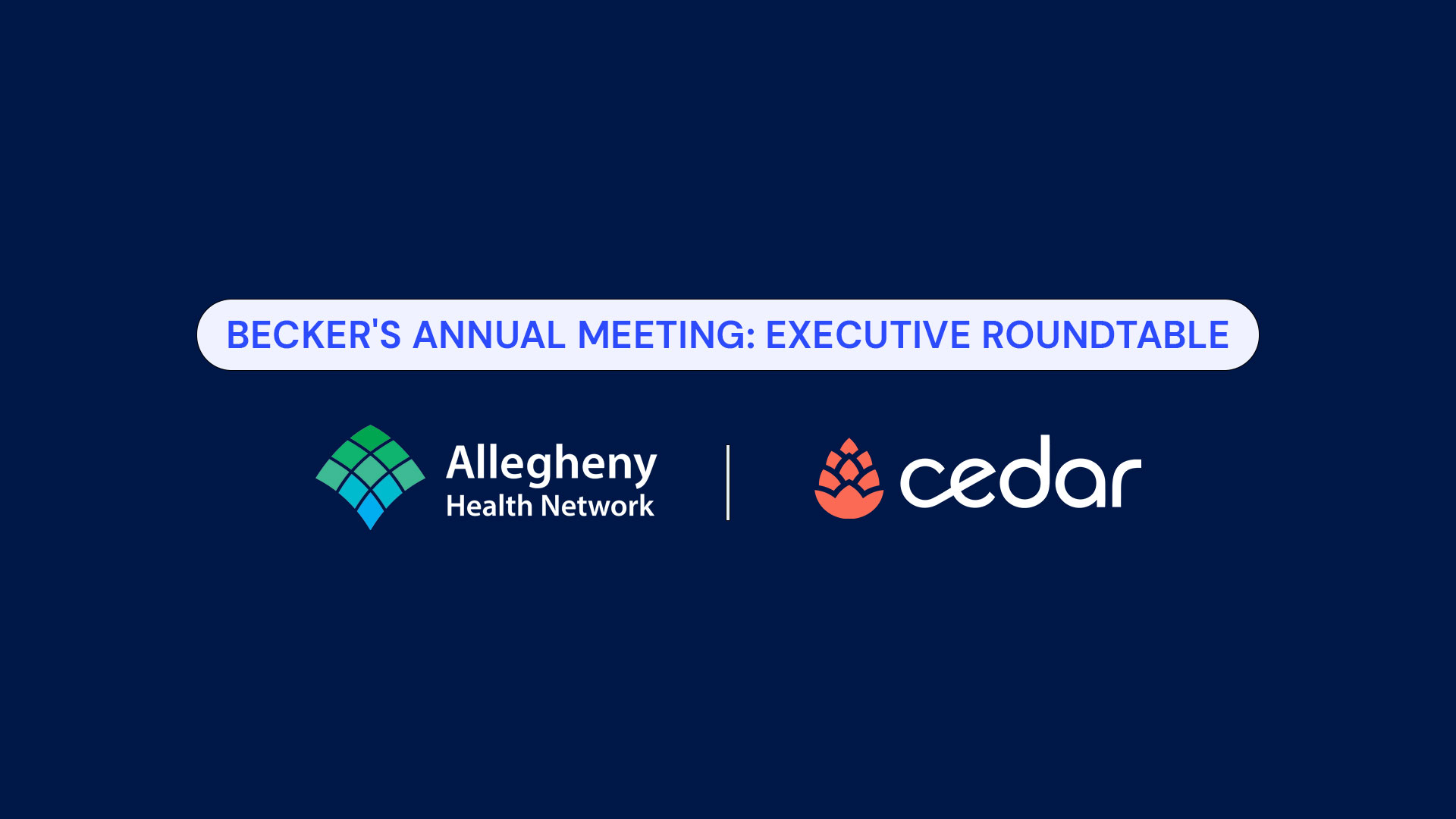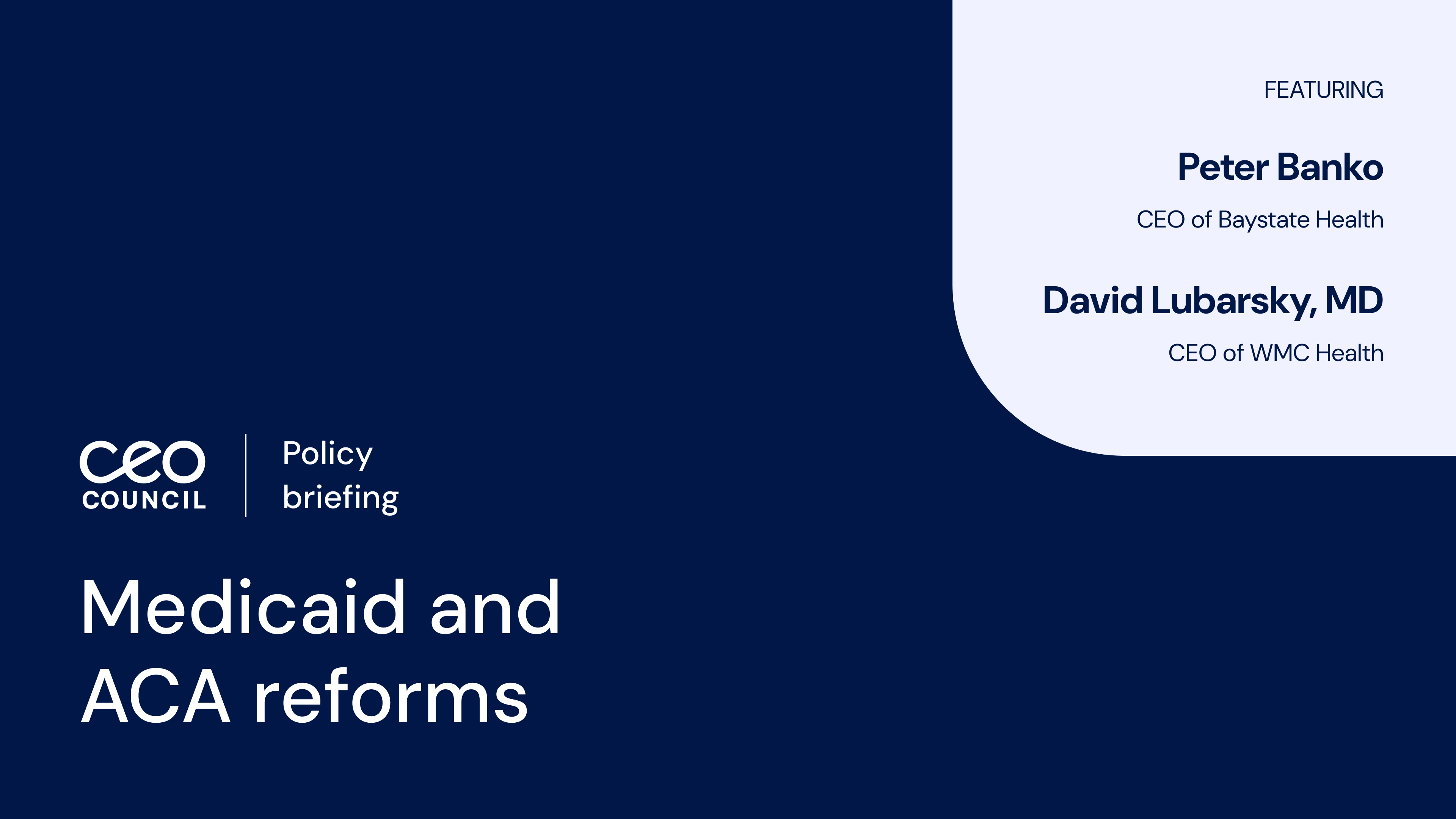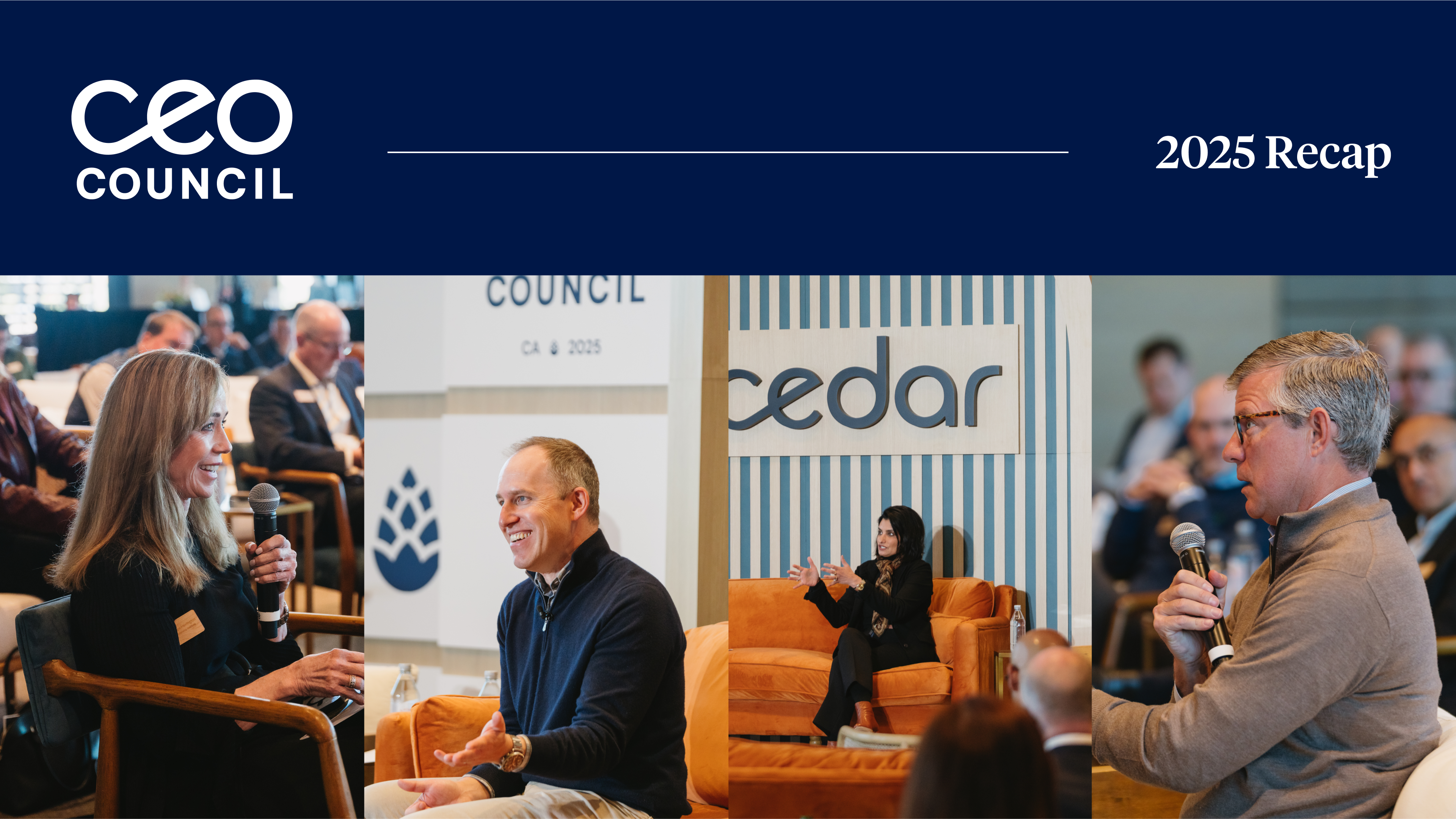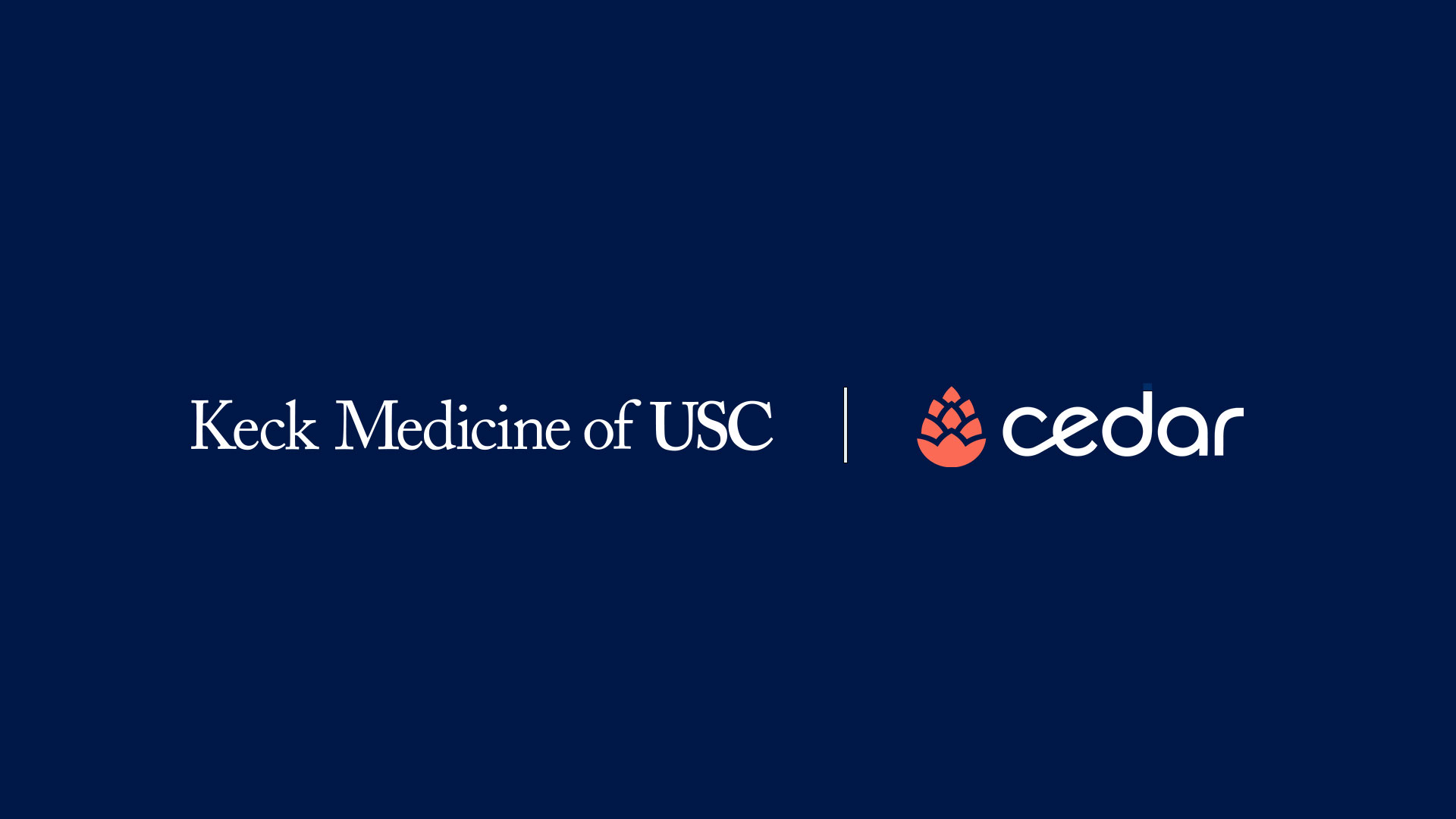After four days of sessions featuring top executives from the nation’s leading healthcare organizations, one theme emerged as the highlight of Becker’s 13th Annual Meeting: connection.
The idea of connection underscores the growing consensus within the industry that no one player can succeed on its own. To address the industry’s biggest challenges, organizations must find new ways of working together to improve the experience for patients and communities.
To that end, Cedar hosted an exclusive Executive Roundtable at the conference with James Rohrbaugh, CFO of Allegheny Health Network, and Shanti Krishnan, VP of Partnerships at Cedar, showcased the health system’s innovative approach to payer-provider collaboration and their vision for a connected financial experience. The two shared how Cedar’s Payer Intelligence Layer is helping Allegheny Health Network and Highmark Health reduce billing friction so patients have a simplified path to resolution.
Here are a few highlights from their conversation. The interview has been edited for length and clarity.
Shanti Krishnan (SK): Highmark and AHN launched the very ambitious Living Health model in 2020, which has accelerated transformation within your organization. Can you talk a little bit about the vision of the Living Health model and what initiatives it involves?
James Rohrbaugh (JR): At AHN, we’re very focused on the Living Health model as it has allowed us to reinvent health through a different lens.
We break the work within the Living Health model into two categories. One category includes what we are doing on both the solution and insurance side, and the other category focuses on how we can redesign the delivery system. At the intersection of these two categories is where the patient experience lies, and where we as an industry have created extraordinary friction for patients.
It’s disappointing when you think about it, especially when you have a poor experience yourself or with a family member. On a day-to-day basis, we think we’re doing the very best we can do, but we’ve got to figure out collectively the nexus between the payers and the providers. While there may be a need to put more dollars into the system, we also need to reinvent the way we work.
SK: Within the Living Health model, there’s a lot of overlap in removing friction for patients and meeting them where they are. To that end, you’re partnering with a lot of different ecosystem players. How do you identify the right players?
JR: We certainly look for partners that share our values. That’s probably the top of the list. We also look for someone who’s a thought partner with us. We all have a lot of great ideas and we’ve all been doing this for a while. We understand what the pain points are but, oftentimes we have trouble picturing how to get from the problem we’ve identified to the solution.
One of the things that struck me in a conversation with the team at Cedar when discussing our partnership was that in many other industries, there’s been lots of work done to focus on this concept of ‘how do you engage differently with your customer.’ And on the provider side, we have not done that work.
Through our partnership with Cedar, we now have a deep understanding of when is the best time to get somebody to pay their bill, relative to payday. Or when is the best time to contact them relative to when they’re taking their kids to daycare, for example. There’s a whole slew of socioeconomic factors that go into paying a bill that we haven’t taken the time to understand. It comes down to meeting the patient – or members on the plan side – where they’re at.
Another big part of finding partners is finding those that have innovative know-how to be able to help reduce the stress and friction within patient experiences. I know we can’t develop that alone internally. That’s just not feasible from a financial perspective or even from an expertise perspective. I think looking for partners that fit in that space is important.
SK: Where else have you seen an opportunity to improve engagement with patients and your community, while supporting your organization’s overall goals?
JR: As a CFO, I’m certainly very focused on the financial results. But the thing that has been the magic moment has been really understanding where the opportunity is within healthcare for us to connect with patients where they are and understand what their preferences are. That really is driving improved financial results.
When I think back on my 30-year career on the provider side, we know the revenue cycle can be a slog because it’s very transactional. We focus every day on making phone calls and sending letters. I hope we’ll take away today how transformational it is when we focus on people’s communication preferences, which includes both when and how they want to be communicated with.
Additionally, being at an organization where there is a payer and a provider is a unique situation that really does provide an opportunity to work together. We’re using the same technology for all of our patients and it’s helping improve results overall. There’s something very unique and special about what we’re doing between the payers and providers.
SK: What has been one of the biggest surprises as we have rolled out Cedar’s Payer Intelligence Layer and Cedar Pay with AHN and Highmark?
JR: What I’ve been struck by is how responsive patients are to seeing the Highmark logo on their billing statement and having it come from AHN. It takes away the fragmentation that we have between the payer and the provider. The number of folks that are requesting itemized bills has dropped substantially. The number of folks who called the call center has dropped substantially.
The thing that’s the most remarkable to me of all is I very rarely fill out the surveys at the end of a digital experience. About 40% of folks fill out the survey and a little around 90% of them are giving it the highest rating in terms of experience.1 And we’re getting remarkable comments about how easy it was to pay your bill. I’ve never heard anyone in my entire career say anything positive about the payment experience. As a CFO, I’m struck by people getting excited about paying their bills. And I’ve had people stop me and make comments, we get a lot of customer feedback that’s been very, very positive. And most importantly, it’s translating into cash results, which from my perspective is really important.
SK: AHN and Highmark being part of the same parent organization is a pretty unique setup. What advice would you have for other organizations with the same sort of setup? And for those who don’t have that advantage, but are interested in driving more collaboration with their key payers?
JR: First, I think it’s easier to collaborate when you’ve got the payer and provider together. This is a unique platform that allows us to move faster and find new ways to work together. And I think trying to find ways to reduce administrative costs – and I call them joint costs – because I think we haven’t done a good job of being motivated on both the payer and the provider side to tackle the cost that we’re driving up for each other.
We as an industry have to get serious about finding new ways to collaborate. Otherwise, we are not going to get to a point where we have a sustainable model in the industry. We have to get innovative and think differently and try to approach the challenges we have in a different way.
Cedar is bringing together payers, providers and other partners to meet the needs of today’s consumers. Learn more about Cedar’s Payer Intelligence Layer here.
1 Based on the available Cedar serviced Allegheny Health Network patient data as of May 2023.
Liz Austin is the Executive Marketing and Programming Lead at Cedar



